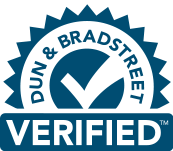Editor’s note: This post was originally published on 6/21/16 and has been updated for accuracy and comprehension.
Why use video for HCP marketing?
- They’re easily customizable.
- They save time.
- Viewers retain information better than with text alone.
- They open the door for future communication.
The healthcare providers (HCPs) you work with are busy.
They take care of the life-saving and trust you to provide them with and educate them about the products that make their jobs easier.
Here’s the deal: There’s a way to help the HCPs you work with to streamline some of their processes, as well.
The answer is video.
Let’s look at the reasons HCP marketing using video is catching on like wildfire – for physicians AND marketing professionals like you.
The benefits of video
Videos can be used for several purposes:
- A physician could watch the video for his or her own education.
- Videos can be versioned to educate a doctor’s patients, helping save a ton of time on behalf of the provider, as well as creating goodwill between the doctor and patient.
When used to its fullest potential, marketing videos offer distinct advantages for busy healthcare providers, including:
- They can be easily customized. A video is shorter than an in-person conversation, more to the point than text, and more oriented to quick bursts of important information, which busy physicians appreciate.
- They’re convenient. Allows “time-starved” physicians to watch a video on their timeline.
- They help viewers better retain information than with text alone. Videos can be stopped, started and rewound for greater comprehension of complex topics.
- They build trust and goodwill with the rep, opening the door for more facetime in the future.
- They greatly increase the viewer’s comprehension of complex topics.
Let’s look at some statistics that demonstrate how valuable video is:
- Visuals help viewers process messages. Studies by the 3M Corporation and Zabisco have found that 90% of information transmitted to the brain is visual, and visuals are processed 60,000 times faster than text.
- Viewers retain information better with video. Viewers retain 95% of a message when they watch it in a video, compared to only 10% when reading it in text.
- Visuals inspire action. Viewers spend 100 percent more time on web pages that have videos, and are 85 percent more likely to purchase a product after watching a product’s video. If your viewer is a doctor who is unlikely to prescribe a certain test or medicine until he or she understands it completely, you can see how video can be a valuable tool.
- People spend an average of 2.6x more time on pages with video than those without.
- By 2022, online videos will make up more than 82% of consumer internet traffic.
- 96% of people say they have watched a video to learn more about a product or a service.
Help doctors explain complex topics to patients
Advances in tests, medicine and protocols require doctors to invest time trying to keep up with evolving technology, which makes it difficult for sales or HCP marketing representatives to call on them.
Here’s a great example of Counsyl, known today as Myriad Women’s Health, who created a great video to help educate and coach physicians on how to talk to their patients about hereditary cancer.
The video features one of Counsyl’s Genetic Counselors who breaks down the doctor/patient discussion into five easy to follow steps. It also incorporates some motion graphic animation to help increase comprehension.
How to make a HCP marketing video
- Come up with plan.
- Write a clear script.
- Once you have your script, visualize.
- Find an expert to properly plan the content.
- Use quality equipment.
- Customize videos to the audience.
- Create patient education videos to save doctor’s time.
- Use the easiest tools.
- Create shorter videos to break up information.
How to make a great HCP marketing video
Here are a few tips that will help you create a successful HCP marketing video:
- Come up with plan. What are the key takeaways or learning goals you want to accomplish with this video? Figure out the information points that are most critical to your goal and plan your video around them.
- Write a clear script. Use language that is logical and easy for the viewer to understand. Don’t use overly-scholastic language. This is about communication, not impressing someone.
- When you have your script, visualize. How can you use motion graphics and animation to teach and help reinforce your key information?
- Find an expert. Unless you’re an expert on your topic, find a person who can help you plan the content. They might even spend a little time in front of the camera in the video.
- Use quality equipment. It’s important to use first-rate cameras, sound and lighting equipment. Although this is educational content, you want to make sure to keep your audience engaged. Multiple camera angles and motion graphics are more engaging than talking heads.
- Customize. If your audience of physicians has different specialties, consider customizing your video to each one. This is especially helpful if there are sizeable differences in language or approach, such as an oncologist vs. a pathologist. This can be done cost-effectively by creating different scripts and filming all versions during one film day.
- Score big points with physicians by offering to create a patient education video they can show their patients which will save the provider tons of time.
- Use the easiest tools. Don’t feel like you have to understand every technological bell and whistle to create an effective HCP marketing video.
- Too much information? Break it up. Your video should be between 2 and 7 minutes long. If it’s longer than that, consider breaking it up into shorter videos, concentrating each one on a single part of the topic.
HCP video marketing is a no-brainer
Use one of the most effective ways to educate and help physicians stay up-to-date on rapidly evolving advances, technology and science.
Video should be in your marketing arsenal, as it’s one of the best ways to engage healthcare providers, helping to save time and increase comprehension of complex topics.







